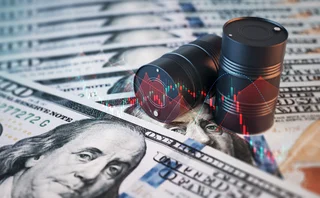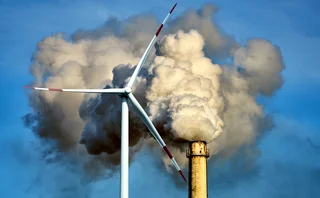No need to be negative about negative prices
Electricity prices falling below zero are not a sign of end times, but a valid price signal


The phenomenon of electricity prices dropping below zero has been in the news lately, and it is often seen as a sign of government renewable-energy policies running amok.
That's not entirely wrong. Negative prices tend to arise when an influx of inflexible wind and solar power floods the grid at times of low demand, in locations where there is insufficient transmission capacity to deliver the power to where it's really needed.
Such episodes first drew widespread attention in Germany, which has the most installed solar capacity of any country in the world. Lately, they have also become a fact of life in the US – particularly in Texas and California, which boast significant penetration by wind and solar, respectively.
This has rankled many power plant owners, which understandably prefer to receive cash for generating electricity rather than being forced to pay for the privilege. In the US, for instance, Chicago-based Exelon has complained loudly about the impact of negative prices on its nuclear facilities in Illinois. Nuclear plants cannot start up and shut down easily, so Exelon's facilities are forced to swallow overnight spells of negative pricing to make money the next day.
But that doesn't mean negative prices are a cause for alarm. For one thing, negative pricing episodes are rare, despite the media attention they have been getting. In Texas, for instance, less than 1% of the prices seen in 2015 in the market run by the Electric Reliability Council of Texas (Ercot) last year were negative, and the frequency of negative price events in Ercot has actually fallen since 2011.
More importantly, such events are a price signal, just like any other price in a market. Whether positive or negative, prices guide the strategies of market participants in both the short and long term, ultimately yielding more efficient outcomes.
Whether positive or negative, prices guide the strategies of market participants in both the short and long term, ultimately yielding more efficient outcomes
So what are negative prices telling us? Several conclusions can be drawn. First, flexibility is important. Modern, natural gas-fired plants that can ramp up and down quickly are the ideal dancing partner for intermittent renewable resources; they can shut off when windy conditions send prices plunging, then come back online when the wind slows.
Second, consumers should be empowered to use more energy when prices go negative. Not only will they collect money for doing so, allowing them to offset bills incurred during more normal periods of positive pricing, but the increased demand will turn negative prices into a self-correcting problem. In other words, as consumers cash in on negative prices, the market will rebalance. Traditionally, this sort of thing would have been impossible, but with ‘smart grid' technology it is now within reach.
Above all, though, negative power prices make it more attractive to develop grid-level storage. In places such as California, governments are encouraging the deployment of energy storage technology, which can suck up excess power when renewables are overwhelming the grid and release it when the sun goes away or the wind dies down.
Think what negative prices mean if you own energy storage. When prices fall below zero, you make money by storing energy; when prices return to positive territory, you make money by selling it back into the market. What you have isn't just a big battery, but a round-the-clock profit machine.
In short, there's no need to get negative about negative power prices. They're just another signal pointing the way to a smarter energy future.
More on Electricity
CRO interview: Shawnie McBride
NRG’s chief risk officer Shawnie McBride discusses the challenges of increasingly interconnected risks, fostering a risk culture and her most useful working habits
Energy Risk Europe Leaders’ Network: geopolitical risk
Energy Risk’s European Leaders’ Network had its first meeting in November to discuss the risks posed to energy firms by recent geopolitical developments
Energy Risk US Leaders’ Network: tackling volatility
Energy Risk’s inaugural US Leaders’ Network convened in Houston in October to discuss risk management challenges caused by geopolitical upheaval, policy uncertainty and volatility
Uncertainty causes rethink on clean energy investment
Waning enthusiasm for net-zero pledges, environmental policy shifts, funding cuts and US tariffs are causing clean energy investors to retreat
Interview: Nodal Exchange’s Paul Cusenza
The fundamentals driving electricity prices, growing confidence in state-driven environmental programmes and Nodal’s share of the US zonal power markets
Energy Risk at 30: Learning from the past
Energy Risk looks back at the seminal events and developments that have shaped today’s energy markets
How quants shaped the modern energy markets
The business models of today’s utility firms are built on quantitative analysis, but the introduction of these techniques in the 1990s was far from smooth
Energy Risk Awards 2025: Nodal Exchange interview
Energy and environmental markets outlook, the impact of AI on power markets and Nodal Exchange’s plans







